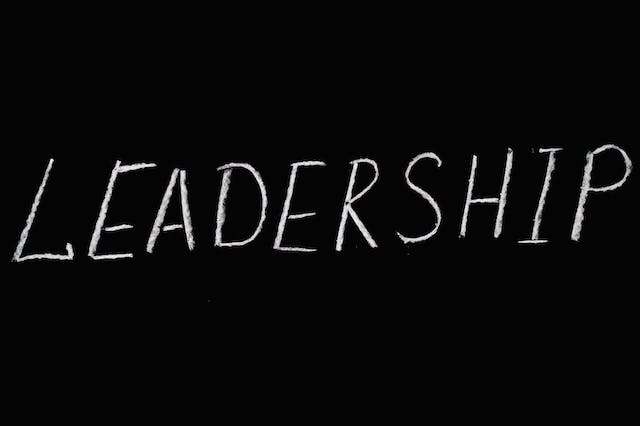Harnessing the Power of Leadership for Team Evolution and Business Growth
Navigating the modern business terrain requires resilience. Operational challenges following the pandemic, growing competition, or quickly evolving technology are only just some of the hurdles that today’s businesses face.
For many businesses, the ability to get through these challenges often lies in their leadership. Effective leaders don’t just maintain operations – they ignite inspiration, offer clear direction, and supply the encouragement and resources their teams need to grow the company.
However, while some people might naturally exhibit leadership qualities, authentic leadership is a skill that’s cultivated and refined over the years. But when harnessed correctly, it can be a powerful tool for helping a business succeed.
Mastering the Art of Effective Communication
Many companies recognize the significance of strong communication in driving business progress. Building trust and ensuring everyone understands the goals is crucial, whether it’s with clients or within the team.
However, often, the reality is that when most employees are asked what is the one thing they would improve about their company, the answer is usually “communication.” Many managers and business leaders believe they communicate well, but truly keeping a team informed often requires more effort and mindfulness than is commonly understood.
True leaders understand that effective communication is as much about listening as it is about speaking. It’s about genuinely engaging with others and not just waiting for your turn to talk. Those who truly listen are not only more compassionate but can also understand their team’s needs more accurately.
Prioritizing clear communication and active listening can enhance team relationships and build a work atmosphere where everyone feels acknowledged and appreciated. Creating this type of environment is pivotal in developing a cohesive team that works closely together to help achieve the company’s objectives.
Enhancing Business Decision-Making
Modern working environments have shifted considerably since the pandemic peaked in 2019 and 2020. Now, just a few years later, many organizations have fully adopted the idea of managing and maintaining remote workforces. Although this has its fair share of benefits, it also brings new challenges for managers and business leaders.
When employees operate outside the traditional office setting, it’s essential that they remain self-driven and have the capacity to make informed decisions for the company without regular oversight. This requires a strong bond of trust to be developed between management and their teams, paired with clear communication to guarantee that everyone is aligned with the organization’s needs.
Effective team leaders help to keep their teams in alignment with the company’s financial and strategic goals. This alignment is what leads to much more efficient decision-making that positively impacts the organization.
Rather than relying on a hierarchical structure, effective team leaders establish an environment of collaboration and teamwork where everyone has a shared responsibility for keeping the company on track.
Building Stronger, More Diverse Teams
 Building a strong company culture is no simple task. Beyond smart recruiting techniques and a firm grasp of the organization’s staffing needs, it demands effort and dedication to build cohesive and diverse teams that are able to collaborate successfully.
Building a strong company culture is no simple task. Beyond smart recruiting techniques and a firm grasp of the organization’s staffing needs, it demands effort and dedication to build cohesive and diverse teams that are able to collaborate successfully.
Attracting top talent often starts with creating a clear and attractive mission and company culture. This ensures that your organization stands out in a competitive job market, where candidates have many options to choose from.
To really establish an effective team dynamic, leaders need to have the aptitude and insights to maximize their team’s potential while promoting a culture of acceptance and respect. This can be quite a challenge for many when considering the rise of remote work and the distributed nature of modern workforces.
However, by dedicating resources to leadership training and growth, organizations can start to see substantial benefits. It not only elevates communication and efficiency levels but also shapes an inviting working atmosphere that attracts top talent and improves retention rates.
Creating a Culture of Mutual Accountability
While individual accountability might not top everyone’s list of preferences, it’s undeniably a foundation for high-performing teams. Whether it’s top executives or new employees, everyone should take responsibility for their actions and contributions toward the company’s goals.
Instead of looking at accountability as a burden, it’s healthier to see it as a means of reinforcing each member’s significance in the organization.
Take the real estate sector as an example. From contractors to on-site workers, everyone’s role is crucial to the project’s final outcome. This approach not only ensures that projects like kitchen renovations or new property builds stay on track in terms of time and budget, but it also emphasizes the importance of safety for all involved.
Now, while not every organization needs to worry about the same safety concerns as construction sites, the concept of mutual accountability still applies. When everyone in the organization takes responsibility for their role and understands how their actions impact others, it builds a strong sense of teamwork and encourages individuals to strive for excellence.
Establishing Clear Expectations
Establishing clear expectations in a company is akin to getting a house ready to sell; both require meticulous preparation and clarity of purpose. Just as homeowners must communicate effectively with real estate agents to prepare each room for potential buyers, it’s imperative for management to use clear communication when outlining distinct expectations from each employee. This lays the foundation for a company to grow, much like how a well-prepared house attracts more interest in the real estate market.
Diving deeper into effective communication, it’s imperative to use it when outlining distinct expectations from each employee. This lays the foundation for a company to grow. Often, when new agendas are rolled out, there can be misinterpretations, with staff unclear about their specific roles.
Merely receiving a set of tasks is different from grasping their importance in the grand scheme of things. This is why delineating clear expectations is pivotal. It offers everyone a clear position in the company’s journey, imbuing them with a defined purpose and direction.
One of the most potent methods to achieve this is by having regular one-on-one sessions with team members. These interactions pave the way for open dialogue and let supervisors understand each individual’s perceptions of their role. Such interactions also serve as a platform for team members to share any reservations or queries, fostering a more open and empathetic workspace.
While some firms might resist the idea of frequent meetings, consistent touchpoints with staff can actually streamline processes and avert potential miscommunications. It’s a testament to management’s investment in the personal and professional growth of their team within the organization.
Adapting to Change Within the Organization
There are few things as certain in business as change. No matter the industry or company size, every organization will inevitably have to deal with changes – some small and others more substantial. It is up to managers and leaders to effectively navigate these changes and ensure that the organization continues to thrive.
The truth is that most people inherently resist change. It disrupts their routine, and they may fear the unknown outcomes that come with it. As a manager, it is crucial to understand and address these fears while also promoting a positive outlook on change.
Creating effective change management processes and communicating openly with employees can help ease the transition. It is also important to involve employees in the decision-making process whenever possible, as this gives them a sense of ownership and control over the changes that are happening.
Leading by example and remaining adaptable yourself is also critical in times of change. As a leader, your team will look to you for guidance and reassurance during uncertain times. If company leadership appears calm and confident in the face of new challenges, employees will be more likely to follow suit.
Acknowledging and Celebrating Team Achievements
With the hustle and bustle of everyday tasks, it’s sometimes easy to overlook the milestones your team achieves. However, taking a moment to celebrate successes can greatly uplift team spirit and productivity levels.
Some businesses might believe that wages alone serve as a sufficient acknowledgment of the efforts of their employees. Although pay is a fundamental agreement between employer and employee, it doesn’t negate the need for real appreciation for the dedication shown.
Ask any group of employees about their motivators, and you’ll get varied answers. While some prioritize monetary compensation, others view acknowledgment and gratitude with greater importance. Understanding your team’s motivations as a leader allows you to provide the right type of incentives for employees.
Creating an environment where employees are seen not just viewed as interchangeable parts, but as unique individuals with distinct skills and contributions can significantly upbuild and motivate the entire workforce. This means celebrating both personal milestones and collective team successes.
While acknowledging someone for their hard work doesn’t need to be a grand gesture, it should be sincere and personalized. There is also the importance of consistency when establishing a precedent for recognizing employee achievements. This means never singling out a team member for recognition while leaving others behind.
Prioritize Effective Leadership for Long-Term Business Growth
For an expanding business, there’s a variety of strategies you can deploy to ensure you’re steering the company toward success. However, building a great team and cultivating a positive culture is one of the most effective.
By emphasizing good leadership, you do more than just make your employees feel appreciated and driven – you lay the groundwork for improved business scale and sustainability.






